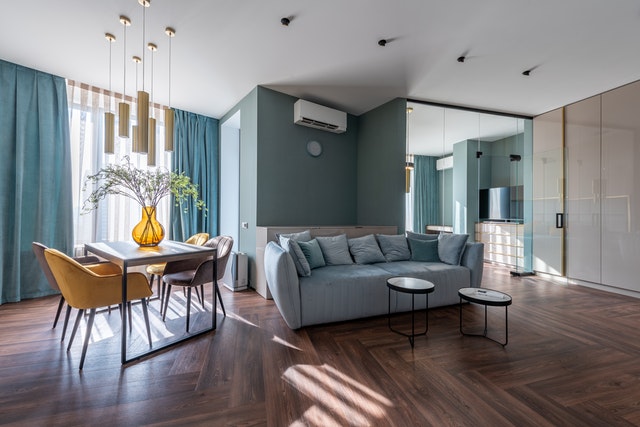“Live edge” wood furniture is an exciting design trend with the bold message that furniture comes from trees.
Once you see a piece of live edge wood furniture, you understand the buzz. It might be a thick wood tabletop with an uneven edge and eye-popping grain or a bold desk with an intriguing pattern of knots and other “imperfections.” This furniture style has a compelling visual impact, whatever its form and function. It’s also a growing trend on the vibrant edge of upscale interior design.
Crafted from a raw wood slab by a master woodworker, each piece of live edge furniture is as unique as the maker and the tree. It’s a design-forward, refined and sophisticated style that still looks like it was just sliced off a tree. The one-of-a-kind pieces are functional art that amplifies any décor, from post-industrial lofts to cozy traditional homes.
The style was first introduced by Japanese-American architect George Nakashima in the 1940s and is inspired by a distinctive Japanese design tradition of simplicity, respect for nature, and the elusive “wabi-sabi,” a kind of perfect imperfection. Revived by artisans in the 21st century, the live edge style is in sync with the spirit of our times. Made from salvaged or recycled wood, the pieces reflect a growing eco-awareness, a desire to incorporate nature into our homes, and a shift away from throwaway things to designs with a lasting impact.
The Cambrian layer beneath the bark in a tree is called the “living edge.” When the tree is cut into slabs, this layer is preserved in its natural, uneven form and defines the unique shape of the finished piece. In conventional lumber processing, the wavy edges, knots, twists, and divergent grains are removed and smoothed out to make a uniform piece of wood. Instead, live edge craftsmen value these quirks and flaws as the tree’s natural “beauty marks” and work with them to give the finished designs distinctive signatures.
Because of this, he was crafting live edge furniture that requires first-rate woodworking skills and then some. The wood is not uniform, and working with it can be full of surprises – decisions have to be made on the fly. Handling, preparing, and finishing huge raw slabs requires more physical effort than standard timber. To conserve the pure Cambrian layer, one artisan carefully removes the bark of the slabs one by one with a hammer.
Experienced live edgers insist that drying the wood properly before working is critical to getting good results. Some air dries the wood for months, even years; others combine perspective and kiln-drying, and others kiln-dry only. Large, thick, uneven wood pieces with knots and varying grains can warp, cup, crack, and split if not dried and handled correctly.
Many variations are determined by available wood species and the artisan’s preferences within the live-edge style. For example, Live Edge Design on Vancouver Island in British Columbia favors locally salvaged bigleaf maple slabs with dramatic forms and rich textures that define a vibrant West Coast style. Peter Bunnett in Ontario salvages damaged or diseased maple, oak, black cherry, and other eastern species in his forest and creates designs that optimize the shapes, colors, and character of these trees. Taking the concept from down-home to downtown, Toronto’s Urban Salvage repurposes city-cut trees into modern designs with an urban touch.
Some live edgers also sell raw slabs to other woodworkers or DIYers or let clients choose a slab to have custom-made into a design of their choice. So creating live edge wood furniture is a collaborative and dynamic process. And that makes it on point for the way we live today.
But in the end, it’s the furniture itself, its esthetic appeal, natural warmth, functional artistry, and spirited – even spiritual – a quality that make it a design choice for today destined to be appreciated for generations.




